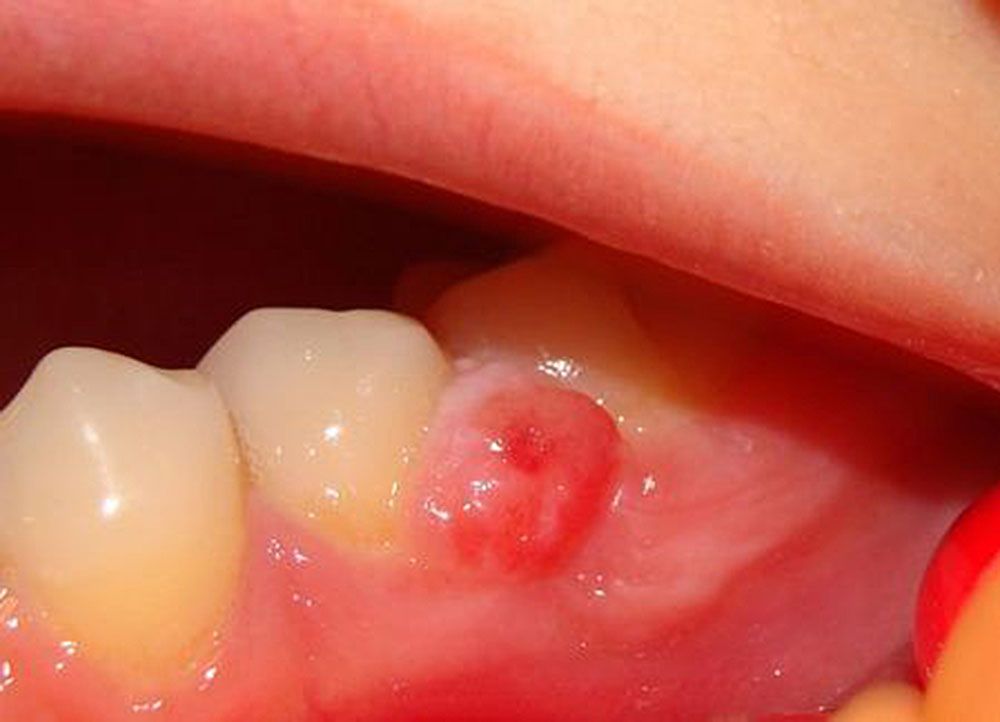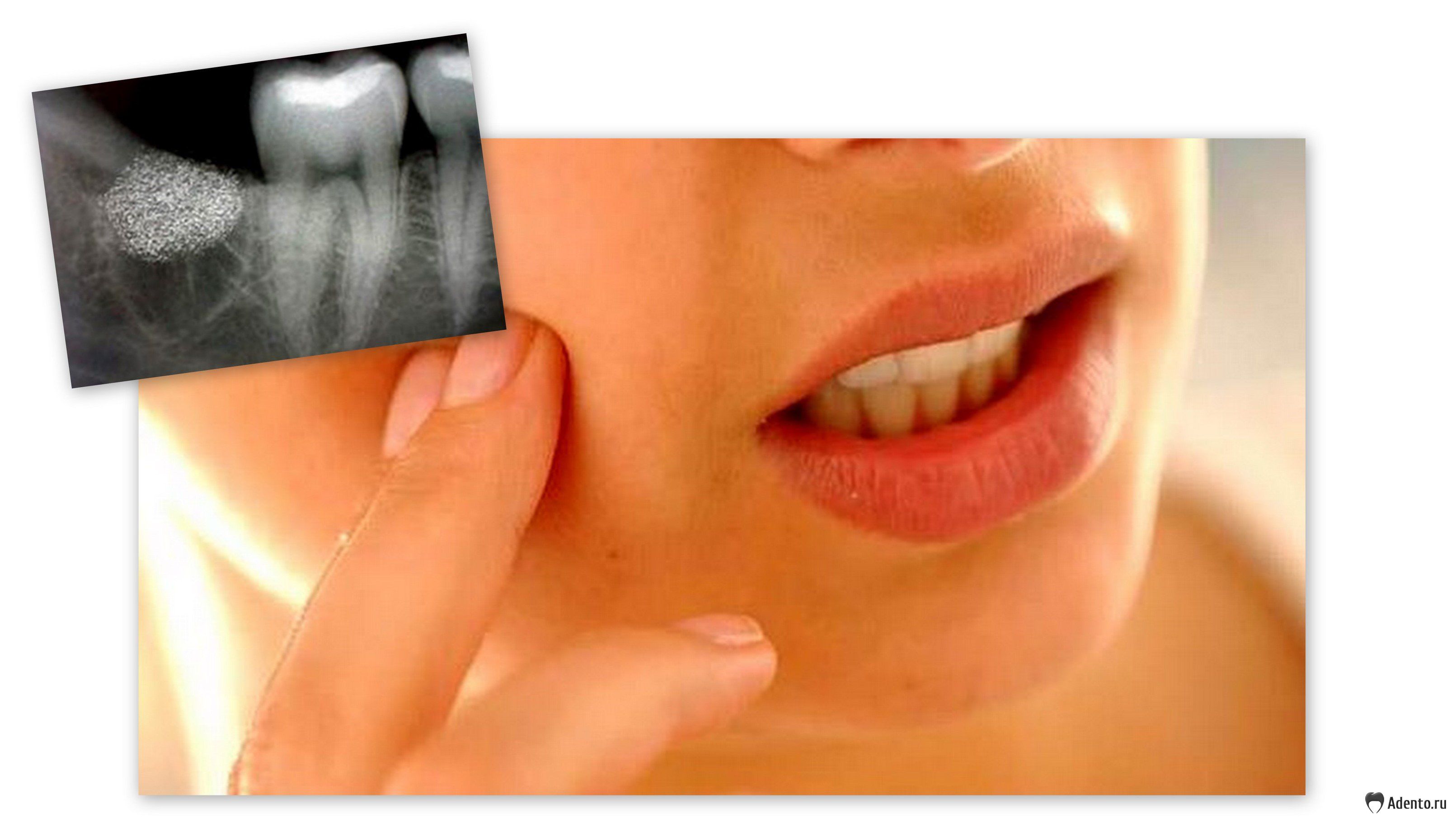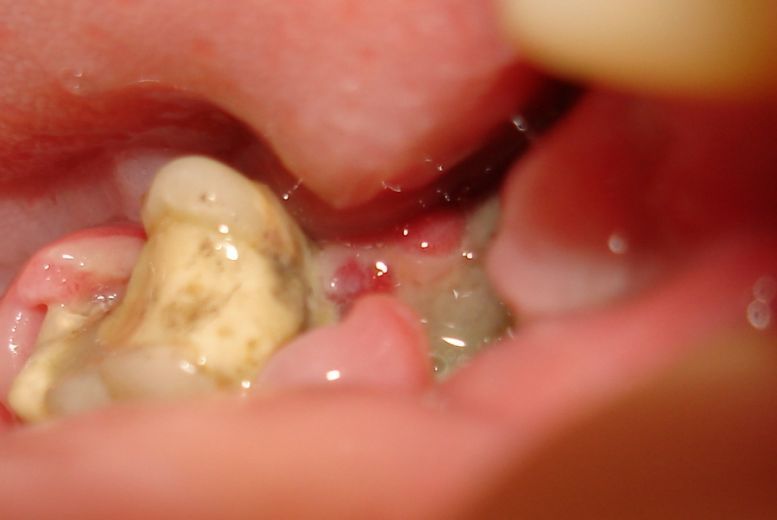Today, many people believe that by removing a tooth, they will once and for all get rid of the problems that have arisen due to its inflammation. However, removal is not always successful. Complications often develop, which also require medical intervention and subsequent treatment. The most common of these is the appearance of a dry hole. In dental circles, this complication is called alveolitis.
What is alveolitis?
This term usually refers to the inflammatory process that develops in the hole of the extracted tooth. Alveolitis captures the soft tissues of the gums around the inflamed alveolar space.
A dry socket formed after tooth extraction can manifest itself in the oral cavity in various forms:
- Acute inflammatory process of a serous nature. In this case, the hole is open. It contains food debris and blood clots. In this condition, the patient feels constant toothache. Body temperature remains within normal limits. Treatment of this form is conservative.
- Purulent inflammatory process, predominantly chronic. At the bottom of the hole, granulations are formed, which quickly spread throughout the entire hole space. The alveolar process of the jaw becomes cyanotic, the gum swells. Droplets of pus are released from the wound.
- Purulent-necrotic inflammation. The most dangerous form of alveolitis. The pain may radiate to the ear and to the temporal region. In this case, the patient feels a general malaise, the body temperature rises sharply. An unpleasant putrid odor appears from the mouth. In the area of inflammation, the gums are edematous, hyperemic. The face is also swollen. The patient is unable to open his mouth due to severe pain and swelling. In the hole, you can find necrotic masses that have an unpleasant odor. The hole is covered with a dirty gray coating. Requires surgical treatment.
Causes of alveolitis

After a tooth has been removed, a blood clot forms in its socket. It serves to protect the wound from infection. But there are also cases when a clot cannot form itself, or it simply breaks up. An inflammatory process develops in the wound. This is how alveolitis occurs.
There are several reasons for the appearance of a dry socket after tooth extraction:
- A mistake can be made by a doctor during a tooth extraction. Pieces of roots or small fragments from inflammatory granulomas (nodules of various sizes, which are a cluster of cells) may remain in the wound;
- the removal operation itself is very traumatic, which increases the risk of complications;
- poor oral hygiene both before and after tooth extraction;
- the use of hard and rough food until the time when the blood clot has formed to the end;
- rinsing the tooth directly on the day of its extraction. This may cause the clot to wash out and expose the wound surface;
- general decrease in immunity;
- systematic smoking.
Dry socket symptoms

If the tooth was removed without any complications, its hole is completely filled with a blood clot. Pain in this area of the gums gradually decreases, a person can eat soft food. However, if the pain reappears after a few days, then we can already talk about the development of alveolitis or a dry hole after the removal of a diseased tooth. Especially often this situation can be observed after the removal of an abnormal wisdom tooth. The main symptoms of this condition are:
- in the area of the removed wisdom tooth, there is a sharp throbbing pain. It usually has an increasing character. May move to other areas of the face;
- the hole is dry, that is, not filled with a blood clot;
- the bottom of the wound is covered with a dirty gray coating;
- there is an unpleasant smell from the mouth;
- suppuration begins from the hole;
- general weakness appears, body temperature rises;
- a bitter taste appears in the mouth, chewing is difficult.
Treatment of such a consequence of the removal of a wisdom tooth in any case should be targeted and immediate.
Basic principles of treatment of alveolitis

Many people, in the event of complications, ask themselves: what to do if a dry socket forms after the extraction of a tooth, in particular wisdom teeth? Before starting any treatment, the patient must take x-rays. With its help, you can see all the small particles of the root of the tooth or granulations that could remain in the hole. It is due to them that the inflammatory process begins to develop. It should be noted that manipulations with wisdom teeth often lead to inflammatory processes, which is due to their location and structural features.
Treatment of a dry socket formed after the removal of a wisdom tooth usually begins with anesthesia. It seems possible to do this with the help of a homeopathic remedy called Traumeel. Then anesthesia will be local. If it is necessary to carry out a blockade, then drugs with lincomycin are most often used. Further, the treatment can be divided into several successive stages:
- Complete cleaning of the tooth socket from the particles of the crown and food debris that are in it, which cause an inflammatory reaction. Thoroughly wash the wound with an antiseptic solution. This is done with a needle that must reach the bottom of the hole. The end of the flushing needle must be blunt to avoid unnecessary trauma. To disinfect the wound surface well, use solutions of potassium permanganate, chlorhexidine, hydrogen peroxide or furacilin. Next, a curettage procedure is carried out, which is a scraping of the inner walls of the formed dry socket with a special rather sharp surgical spoon.
- After a thorough revision, the well is re-treated with an antiseptic solution.
- The well is well dried and sprinkled with powder anesthesin.
- If the inflammation is serous in nature, then an iodoform bandage is applied to the wound surface. In the presence of pus, the dressing is impregnated with camphorphenol, tetracycline-prednisolone solution or propolis solution.
- With purulent inflammation, a pain blockade is performed with a solution of trimecaine, lidocaine or novocaine.

With purulent inflammation, the dressings are changed every day until a visible improvement in the patient's condition. With a serous form of alveolitis, the dressing is changed for the first time every other day, then every three days until the pain disappears. With each change of dressing, the tooth socket is carefully treated with an antiseptic solution.
To speed up healing, the patient may be prescribed physiotherapy. The doctor must prescribe analgesics and a vitamin complex. With purulent inflammation, antibiotics may be prescribed.
Restoring the normal state of the well
If all the recommendations and procedures are carried out correctly, the patient may notice improvements in a few days. This process usually takes no more than a week. New granulation tissue begins to appear on the inner alveolar walls. The pain is greatly reduced. Finally, the inflammatory process passes only by the end of the second week after the operation, in the case of a wisdom tooth, this period can be extended by several days. The healing process begins with the fact that the swelling subsides, the gum returns to its original state, becomes pink. The hole is filled with granulation tissue, the first and thinnest layer of the epithelium begins to appear.
However, if with purulent inflammation the start of treatment was delayed, then it can be expected that no drug therapy will correct the situation. In this case, the inflammatory process can be greatly aggravated. The alveolitis will develop into a more severe form called limited osteomyelitis. There is no way to do without surgical intervention.
In any case, tooth extraction can be considered a rather complicated operation. And so that in the future there will be no complications during wound healing, the patient must unconditionally adhere to all the recommendations given to him by the attending doctor.





